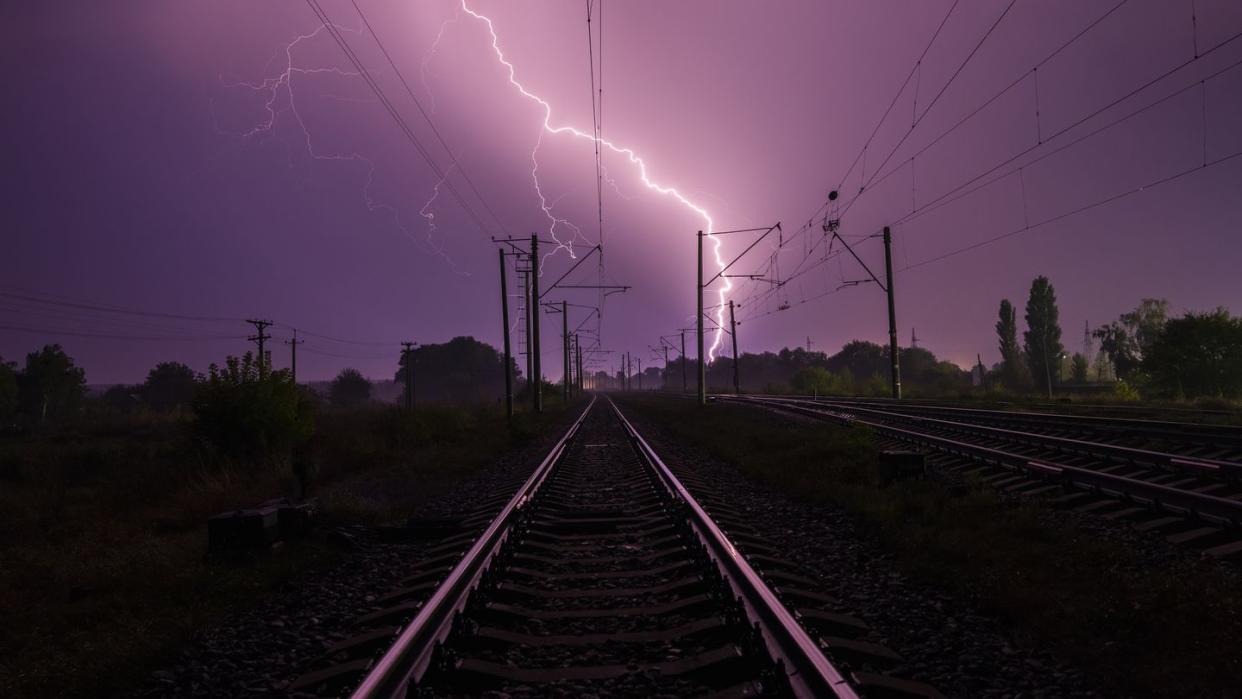Brutal Storms From Space Could Absolutely Devastate Our Trains and Railroads

Solar flares are the biggest explosions in the Solar System, and scientists know that they can wreak havoc on the electric grid, radio communication, and internet infrastructure.
Now, a new study is analyzing the impact of powerful solar flares on the railways, as these storms can magnetically disrupt signaling and cause deadly failures.
Understanding solar flares is vitally important, especially as the Sun approaches its solar maximum and flares could become more common.
Solar flares are the largest explosive events in our Solar System. These intense bursts of ionized plasma carry magnetic—and thereby technological—disruption in their wake as they race toward Earth. Usually, solar flares are rendered harmless by the Earth’s thick atmosphere and strong magnetic field (a.k.a. the magnetosphere), the latter of which is generated by the molten iron alloys in our planets outer core.
Although this invisible magnetic shield makes life on Earth possible, it doesn’t have a 100 percent win rate. Sometimes, a strong solar flare can penetrate the magnetosphere, which creates auroras at the Earth’s pole and, even rarer still, can cause devastation to Earth’s vulnerable electric infrastructure. Although the effects of powerful solar flares on things like the electrical grid and internet infrastructure are well known, a new study from Lancaster University in the U.K. claims that the impact on railways could be equally devastating. The results of their study were published in the journal Space Weather.
“Crucially, our research suggests that space weather is able to flip a signal in either direction, turning a red signal green or a green signal red,” study co-author Cameron Patterson said in a press statement. “By building a computer model of the signaling track circuits using realistic specifications for the various components of the system, we found that space weather events capable of triggering faults in these track circuits.”
The very first traffic signals were not designed for automobiles but for trains, and while they’ve evolved over the decades, the most basic signals still use just red and green lights to signal “stop” and “go.” However, when a solar flare produces a geomagnetically induced current, or GIC, they can trigger “wrong side” failures that cause a signal to switch erroneously from red to green. And if you’ve ever sat at a four-way traffic light, you know that’s not a good thing.
To test this, Patterson’s team computationally modeled two railroad routes that use 50,000 signaling track circuits controlled by electricity. The study found that not only are these potentially deadly “wrong side” failures possible, they can occur at a lower geomagnetic threshold than “right side” failures—when green lights turn red (which are a headache, but significantly less dangerous).
Disruption to railway signaling can happen when geomagnetic disturbances induce electric currents in the rails that interfere with the electrical circuits used to detect trains,” the paper reads. “Railway lines using track circuit signaling are separated into a number of individual blocks, and this study shows that a relay is most susceptible to misoperation when a train is at the end of a track circuit block.”
Although the paper uses a once-in-a-century event for modeling, these aren’t hypothetical scenarios. Rather, they are reflections of actual solar storms that have occurred in the past—the most famous being the 1859 “Carrington Event,’ which disrupted telegraph operation around the world. However, a more recent example occurred in 2017 when two solar flares disrupted radio communication during relief efforts for Hurricane Irma.
The Sun is also approaching its solar maximum, which often brings with it increased flare activity. Thankfully, NASA and other space agencies are on high alert for this very kind of technology-disrupting activity.
You Might Also Like

